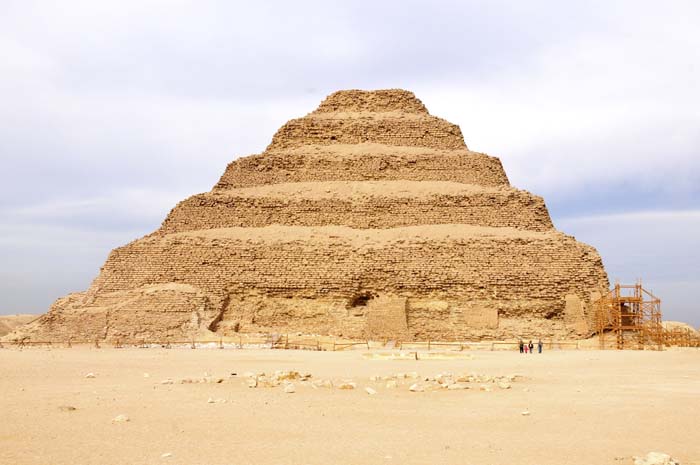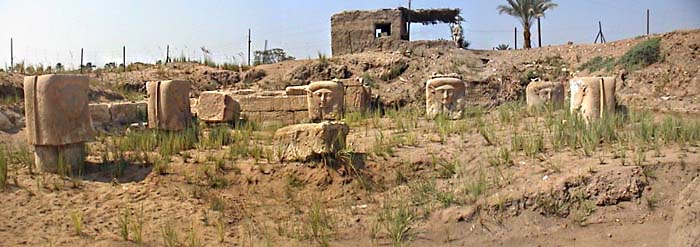Memphis
Memphis is the ancient Egyptian city that served not just as an important city but also as the capital of ancient Egypt during the Old Kingdom. It was the home of many pharaohs, including King Tutankhamun, and it remained an essential city throughout history, until its demise around the time of the rise of Christianity after the first century A.D.
Location
Memphis is located to the South of the Nile River delta on the West bank. It sits about 15 miles south of modern Cairo, and lays on the border that divides Upper and Lower Egypt. It is home to the pyramids of Giza and the Great Sphinx. It is also home to the great necropolis, Saqqara, which was a popular burial place for Pharaohs of the Old Kingdom as well as other noblemen.
History of Memphis
Memphis was founded by King Menes. He unified Upper and Lower Egypt into one monarchy. The first name for the city was “White Walls” which likely derived from the whitewashed brick of Menes’ palace. Memphis was such an important city during the Old Kingdom that many pharaohs and other powerful people chose the desert bluffs here as their burial place.
Memphis is the cult center of Ptah, a creator God in ancient Egyptian religion. He was also patron of craftsmen which was appropriate because Memphis, in its heyday, thrived as a center for commerce and trade. Although it wasn’t directly on the Nile River, a canal connected it, allowing for abundant trade.

© Franck Monnier - Artist's Impression of the Great Temple of Ptah
Many temples were built here in honor of Ptah, and the lion-headed goddess Sekhmet (his wife) and their son, Nefertem. However, these temples now lie in ruins. At one time, the Great Temple of Ptah stood as one of the city’s most prominent structures.
Memphis enjoyed being the capital city of ancient Egypt during eight consecutive dynasties during the Old Kingdom. With the rise of Thebes during the New Kingdom, Memphis declined. It did, however, function as a second capital of Egypt and saw the birth of Amenhotep II.
Memphis was seized by the King of Persia, Cambyses II in 525 B.C. Alexander the Great defeated the Persians in 332 B.C. and kept Memphis as his headquarters while he planned his city, Alexandria, to the north.
During the rise of Christianity, many of the temples were destroyed and Memphis was eventually abandoned. The few structures that remained were dismantled to build other villages including the city of Cairo.
Remains of Memphis
Only a few ruins remain of the great city, Memphis, today. One of them is a statue of Ramses II. Once measuring 40 feet in length, it has been damaged and the lower legs and feet are now missing from it. At one time, it adorned the temple of Ptah. However, now, it has sustained a lot of damage from centuries of lying in the sand.
The other important ruin at Memphis is the alabaster Sphinx. Smaller and less prominent than the Great Sphinx at Giza, the alabaster Sphinx stands about 13 feet high and 24 feet long. It is estimated to weigh about 80 tons.

© Jennifer McLinden - Alabaster Sphinx
Saqqara
Saqqara served as the necropolis (burial grounds) for Memphis. It is important because it is home to many pyramids including the Step Pyramid of Djoser which was built during the 3rd Dynasty. 16 other Egyptian kings built their pyramids at Saqqara. Notable, non-royal people also chose Saqqara as their burial place. In 1979, the area was designated a World Heritage Site by UNESCO.
The first greatest stone building in Egypt is credited to third dynasty king, Djoser and his adviser, Imhotep. The stone building is the Step Pyramid of Saqqara.

© Ed Yourdon - Djoser's Step Pyramid
Some of the monuments found at Saqqara include:
- Pyramid Complex of Teti
- Pyramid Complex of Pepi I & Pepi II
- Pyramid Complex of Netjerikhet
- Pyramid Complex of Sekhemkhet
- Pyramid Complex of Userkaf
- Tomb of Hotepsekhemwi
- Pyramid Complex of Merenre I
Click here to learn more about Saqqara
Archaeological Exploration of Memphis
The village of Mit Ruhaynah lies close to the ruins of the ancient city of Memphis. Around the turn of the 20th century, some of the walls of the ancient city (though ruined even then) could be seen but have since disappeared. Unfortunately, many of the pyramids and tombs were pillaged by treasure hunters before true scholarly research could be conducted.

Ruins of the Temple of Hathor at Memphis
Timeline
- 1850: Auguste Mariette discovered the Serapeum.
- 1908-1913: Sir Flinders Petrie uncovered section of the Temple of Ptah. These sections have since disappeared.
- 1917: Foundations of the palace of Merneptah were excavated by a University of PA expedition.
- 1930s: Walter Byron Emery uncovered important first dynasty tombs.
Other noteworthy archaeologists included Andrew Reisner and Hermann Junker (excavations at Giza), Ludwig Borchardt (excavated 5th dynasty pyramids and sun temples), Zakaria Goneim (discovered an unknown pyramid from the 3rd dynasty) and J.P. Lauer (Step Pyramid complex).
Facts about Memphis
- The funerary objects of Saqqara are considered one of the Seven Wonders of the Ancient World.
- Memphis served as capital of Egypt when the Persians ruled during the 27th Dynasty.
- The word “Memphis” is a Greek word derived from the Egyptian word “Menofre”.
- In the 5th century B.C., the Greek Historian, Herodotus, visited Memphis .
- The rise of the port city, Alexandria, led to the final abandonment and deterioration of Memphis.
- Also known as Ankh Tawy meaning “binding the two lands” (upper and lower Egypt).
- The Step Pyramid of Saqqara was built in 2650 B.C.
- The Apis Bulls, considered to be living manifestations of Ptah, were buried in the Serapeum of Saqqara.
- Saqqara covers an area of about four square miles and is divided into two categories: Saqqara-North and Saqqara South.
- Memphis was founded by King Menes in 3,100 B.C.
